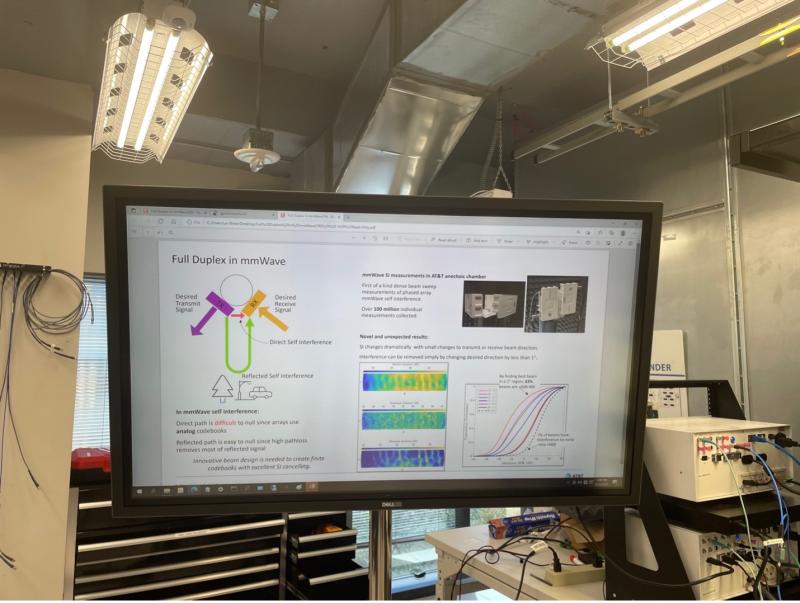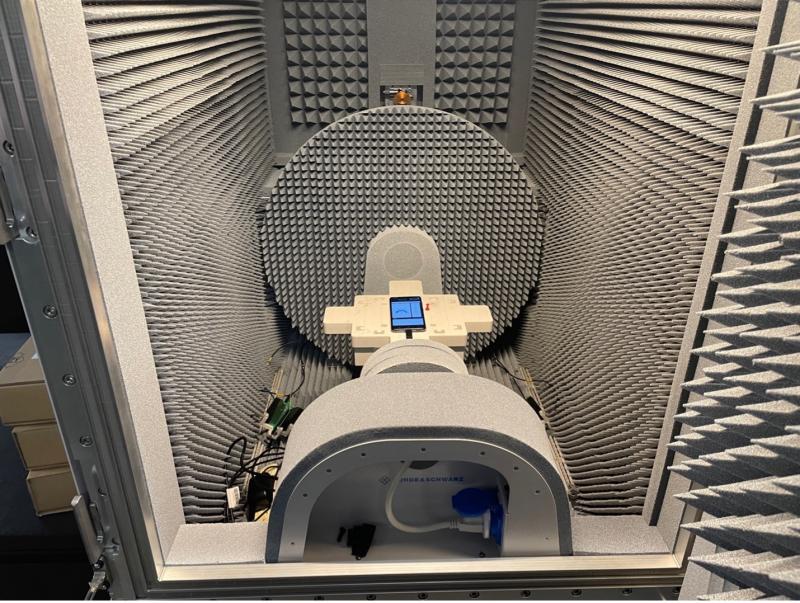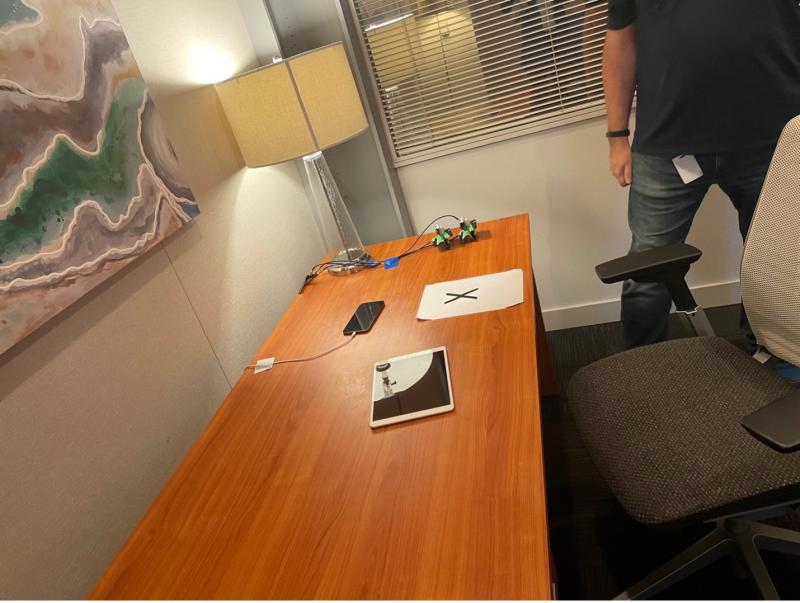While U.S. carriers spend billions to buy spectrum at auction, and squabble with satellite owners for access to more, their engineering teams are working hard to find ways to use this resource as efficiently as possible. One of the most promising technologies is full duplex transmission — the ability to send and receive on a single channel at the same time. Academic researchers at Stanford and the University of Texas have launched startups dedicated to full duplex, and the carriers themselves are also investigating this technology.
For AT&T, this research takes place at its Austin, Texas lab under the direction of Milap Majmundar, director of the lab’s Advanced Wireless Technology Group. Like many of his colleagues at the lab, Majmundar holds more than 100 patents; he said his team’s job is investigating new ideas, so filing for patents is a natural outcome of their work.
That work currently involves a full duplex mmWave integrated access and backhaul system, which Majmundar’s team demonstrated for Fierce Wireless. The team is using beamforming designs to minimize the self-interference inherent in a system that is sending and receiving on the same channel simultaneously. Majmundar said there can be two types of self-interference, direct and reflected, but currently the team is testing in an anechoic chamber that eliminates reflected interference.
Majmundar and his team are measuring the Interference-to-Noise Ratio (INR), or the ratio of direct self-interference power to the noise power detected at the receiver. If the INR is below 0 dB, self-interference is less than the noise floor of the receiver, meaning it is unlikely to be a problem. The AT&T team learned that by adjusting transmit or receive beam direction by just 2 degrees, they could boost the percent of beams with INR below 0 dB from 7% to 83%.

AT&T is testing full duplex in the 28 GHz spectrum band
“This can lift a significant burden off of the signal processing required to do heavy self-interference cancellation at the receiver and provide performance and capacity gains,” explained Majmundar.
He said the AT&T team hopes to see full duplex enabled as part of the 6G standard.
Devices, fiber and user experiences
AT&T’s Austin lab also has teams dedicated to device performance testing and fiber technology development, as well as a group devoted to artificial intelligence and studies of user experiences with the network.
Every wireless device sold by AT&T undergoes weeks of over-the-air testing, according to the engineers at the Austin lab. Each smartphone must be tested on each of the carrier’s spectrum bands, a process that became more labor-intensive when the operator added mmWave.
Prabha Aithal, director for device architecture, leads a team that tests smartphones and tablets in specialized RF chambers, using equipment provided by Keysight, Rhode & Schwarz, and Anritsu. They’re measuring data speed, battery life, transmitter and receiver performance, and e911 location accuracy, as well as the ability to move between LTE and 5G.

AT&T tests devices inside RF chambers at its Austin Lab.
The team said that while modem makers Qualcomm, Samsung and MediaTek optimize their chipsets for certain frequency bands, the smartphone manufacturers will optimize for the AT&T network specifically.
How those phones perform is not just a function of device hardware and software, but also of the network itself. Thousands of variables can be adjusted at the network level, according to AT&T’s James Pratt, director of AI user experience research. Pratt is one of the leaders of AT&T’s Human Factors Lab, created to help the carrier tweak the network to deliver the experiences users want. The team gathers information by watching volunteers use AT&T devices in simulated real-life situations.

Members of AT&T’s Human Factors Lab team can watch volunteers interact with devices from behind a window.
Pratt is a doctor of psychology with expertise in decision-making, a skill set he uses to evaluate the choices users make as they interact with devices. Network performance is a delicate balance of several parameters, and each type of app requires different aspects of the network to be optimized.
“What we’re really trying to do is make sure our subscribers are satisfied and stay subscribed,” Pratt summarized. In addition to helping AT&T reduce churn, the Human Factors Lab team assists with the design of customer premise equipment for AT&T’s home internet business. Pratt said CPE that customers can self-install has helped save the company hundreds of millions of dollars by reducing the need for truck rolls to send technicians to homes.
The team is also using artificial intelligence to help AT&T cut costs and improve the network. For example, when a phone is returned to a store and the retail associate enters the IMEI number into AT&T’s database, AI algorithms can process various information associated with the IMEI to determine whether the device might be stolen, or if the transaction is likely fraudulent. AT&T also uses AI to plan its fiber builds, and to optimize network performance in real-time. The operator exposes APIs to software developers, so they can write code that accelerates their network applications.
The network’s fiber backbone is of course a key determinant of performance, and advancing fiber speed and efficiency is another mandate for AT&T’s Austin lab. Recent achievements include the FiberWise device (pictured below), which can combine XGS PON and 25G PON inputs into one output.

AT&T’s SMCF7 combines two signal inputs into one output.
Another fiber innovation, the BGW320, incorporates a gateway and an optical network terminal into one device. AT&T director Ed Walter said this innovation was key to making advanced fiber solutions price-competitive with previous generations.
RELATED: AT&T exec says mainstream 25G rollouts likely a 2024 story
Walter explained that the BGW320 is a customer-premise device, adding that AT&T is evaluating designs for future 25G PON CPE devices.